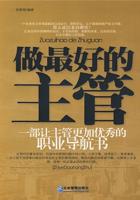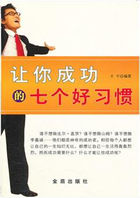No doubt he often supplied the germinal ideas, while his assistants only carried them out. But occasionally the suggestion was nothing more than this: 'I want something that will do so-and-so. I believe it will be a good thing, and can be done.' The assistant was on his mettle, and either failed or triumphed. The results of the experiments and researches were all chronicled in a book, for the new facts, if not then required, might become serviceable at a future time. If a rare material was wanted, it was procured at any cost.
With such facilities, an invention is rapidly matured. Sometimes the idea was conceived in the morning, and a working model was constructed by the evening. One day, we are told, a discovery was made at 4 P.M., and Edison telegraphed it to his patent agent, who immediately drew up the specification, and at nine o'clock next morning cabled it to London.
Before the inventor was out of bed, he received an intimation that his patent had been already deposited in the British Patent Office. Of course, the difference of time was in his favour.
When Edison arrived at the laboratory in the morning, he read his letters, and then overlooked his employees, witnessing their results and offering his suggestions; but it often happened that he became totally engrossed with one experiment or invention. His work was frequently interrupted by curious visitors, who wished to see the laboratory and the man. Although he had chosen that out-of-the-way place to avoid disturbance, they were never denied: and he often took a pleasure in showing his models, or explaining the work on which he was engaged.
There was no affectation of mystery, no attempt at keeping his experiments a secret. Even the laboratory notes were open to inspection. Menlo Park became a kind of Mecca to the scientific pilgrim; the newspapers and magazines despatched reporters to the scene; excursion parties came by rail, and country farmers in their buggies; till at last an enterprising Yankee even opened a refreshment room.
The first of Edison's greater inventions in Menlo Park was the 'loud-speaking telephone.' Professor Graham Bell had introduced his magneto-electric telephone, but its effect was feeble. It is, we believe, a maxim in biology that a similarity between the extremities of a creature is an infallible sign of its inferiority, and that in proportion as it rises in the scale of being, its head is found to differ from its tail.
Now, in the Bell apparatus, the transmitter and the receiver were alike, and hence Clerk Maxwell hinted that it would never be good for much until they became differentiated from each other. Consciously or unconsciously Edison accomplished the feat. With the hardihood of genius, he attempted to devise a telephone which would speak out loud enough to be heard in any corner of a large hall.
In the telephone of Bell, the voice of the speaker is the motive power which generates the current in the line. The vibrations of the sound may be said to transform themselves into electrical undulations. Hence the current is very weak, and the reproduction of the voice is relatively faint. Edison adopted the principle of making the vibrations of the voice control the intensity of a current which was independently supplied to the line by a voltaic battery. The plan of Bell, in short, may be compared to a man who employs his strength to pump a quantity of water into a pipe, and that of Edison to one who uses his to open a sluice, through which a stream of water flows from a capacious dam into the pipe. Edison was acquainted with two experimental facts on which to base the invention.
In 1873, or thereabout, he claimed to have observed, while constructing rheostats, or electrical resistances for making an artificial telegraph line, that powdered plumbago and carbon has the property of varying in its resistance to the passage of the current when under pressure. The variation seemed in a manner proportional to the pressure. As a matter of fact, powdered carbon and plumbago had been used in making small adjustable rheostats by M. Clerac, in France, and probably also in Germany, as early as 1865 or 1866. Clerac's device consisted of a small wooden tube containing the material, and fitted with contacts for the current, which appear to have adjusted the pressure. Moreover, the Count Du Moncel, as far back as 1856, had clearly discovered that when powdered carbon was subjected to pressure, its electrical resistance altered, and had made a number of experiments on the phenomenon. Edison may have independently observed the fact, but it is certain he was not the first, and his claim to priority has fallen to the ground.
Still he deserves the full credit of utilising it in ways which were highly ingenious and bold. The 'pressure-relay,' produced in 1877, was the first relay in which the strength of the local current working the local telegraph instrument was caused to vary in proportion to the variation; of the current in the main line. It consisted of an electro-magnet with double poles and an armature which pressed upon a disc or discs of plumbago, through which the local current Passed. The electro-magnet was excited by the main line current and the armature attracted to its poles at every signal, thus pressing on the plumbago, and by reducing its resistance varying the current in the local circuit.
According as the main line current was strong or weak, the pressure on the plumbago was more or less, and the current in the local circuit strong or weak. Hence the signals of the local receiver were in accordance with the currents in the main line.















